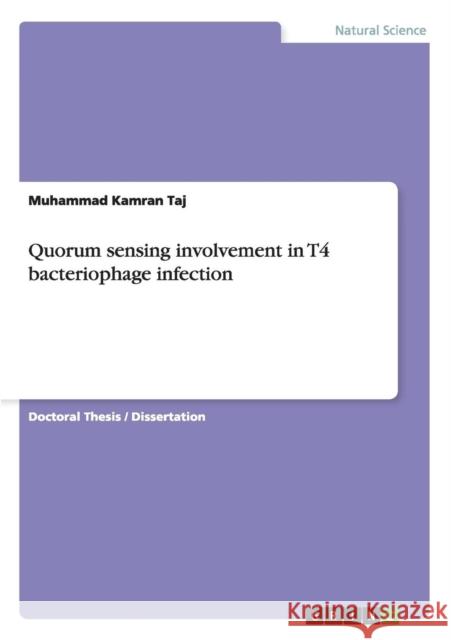Quorum sensing involvement in T4 bacteriophage infection » książka
Quorum sensing involvement in T4 bacteriophage infection
ISBN-13: 9783656723356 / Angielski / Miękka / 2014 / 144 str.
Doctoral Thesis / Dissertation from the year 2014 in the subject Biology - Micro- and Molecular Biology, grade: 1, Kunming University of Science and Technology, course: Environmental Microbiology, language: English, abstract: Quorum sensing (QS) is an important way to communicate information between bacteria. Bacteria used different quorum sensing molecule for communication and these signals molecules are called autoinducer (AI). These autoinducers are produced and released by the quorum sensing bacteria to levels dominating the increasing cell-population density. The attainment of minimal threshold stimulatory concentration of an autoinducer leads to an alteration in gene expression. Both Gram-positive and Gram-negative bacteria are capable of using quorum sensing communication circuits for regulating a diverse array of physiological activities. These activities include symbiosis, competence, virulence, conjugation, antibiotic production, sporulation, motility and biofilm formation. The Gram-negative bacteria use acylated homoserine lactones as autoinducers, while Gram-positive bacteria use processed oligo-peptides to communicate. In the field of quorum sensing revealed, cell to cell communication via autoinducers both within and between bacterial species. The establishment of enormous data in this field suggests autoinducers acquiring specific responses from host organisms. Despite the difference in chemical signals, signal relay mechanisms and the target genes controlled by the bacterial quorum sensing systems, the ability to communicate with one another allows bacteria to coordinate the gene expression as well as the behavior of the entire community. This process presumably confers upon the bacteria some of the qualities of higher organisms. The evolution of quorum sensing systems in bacteria thus could have been one of the early steps in the development of multicellularity.











